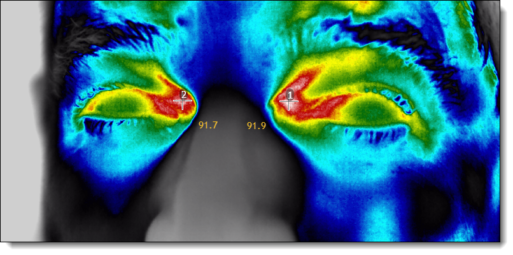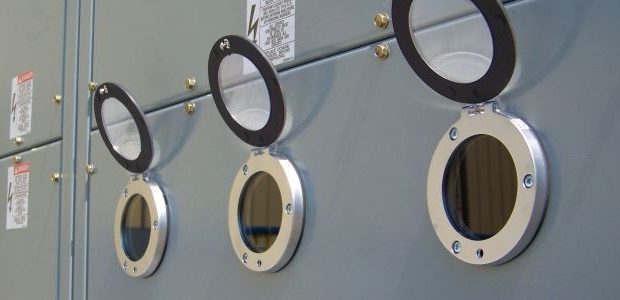There are many documents defining the specifications for reducing/eliminating electrical safety hazards and prevent equipment failures, while at the same time increasing a facility operating up-time. There is no question of the benefits of implementing solid safety and electrical preventive maintenance (EPM) programs but understand how the different specifications relate and reference each other is the key to be in compliance with OSHA, NFPA, ASTM, ASNT, and ISO. If you are not, and unfortunately something bad happens, then these standards will be held up as the benchmark for what you were supposed to do, and then questions will be asked as to the reasons why they were not followed.
OSHA
Occupational Safety and Health Administration (OSHA) a branch of the United States Dept. of Labor, in OSHA 1910 Subpart S and OSHA 1926 Subpart K purpose is to identify and reduce or eliminate electrical safety hazards in their workplace. Electrical Safe Work Practices including:
- Electrical safety principles
- Guidelines for the qualification of personnel
- Job planning requirements
- Management
- Personal Responsibility
What is important to understand is that OSHA made a request for NFPA (National Fire Protection Association) to create a document that defines “Electrical Safety in the Workplace” i.e NFPA 70E and is referenced in OSHA’s 1910 / 1926 document.
To further confuse all of these documents NFPA 70E also references NFPA 70B – Recommended Practice for Electrical Equipment Maintenance you start to have this cross-referencing of documents that add more layers to each other.
In NFPA 70B under Section 2. Regularly scheduled inspection, testing, and servicing of equipment, you will see:
11.17.5 Inspection Frequency and Procedures.
Routine infrared inspections of energized electrical systems should be performed annually prior to shut down.
More frequent infrared inspections, for example, quarterly or semiannually, should be performed where warranted by loss experience, installation of new electrical equipment, or changes in environmental, operational, or load conditions.
Helping you to manage your inspection frequencies:
Colbert Infrared tracks the history of all your inspections using the “Thermal Trend” database that benchmarks and trends all of your electrical equipment when it was tested and by whom. As stated above by the NFPA in publication 70B, the inspection frequency is every year. And for equipment that may be at more risk, it is suggested that you decrease the interval between testing when warranted by many other considerations.
We categorize your equipment into three classifications based on it’s “Criticality to Operation or CTO” and the Consequences Of Failure or CFO. These classifications should also be compared to historical data on the equipment’s reliability to judge its correct classification. The inspection frequencies timeline can be set up to also reinspect base problem conditions at the same time in the Thermal Trend database so as to maximize the effort more efficiently when performing an inspection.
The three CTO classifications of equipment are:
- Critical to operation “C”
- Essential to operation “E”
- Non-essential to operation “N-E
If we create a timeline on a requirement that all equipment must be tested annually, then we can establish a testing schedule based on the CTO of your equipment, for example:
- Critical equipment every 3 months
- Essential equipment every 6 months
- Non-essential equipment every year
On an annual based you would be testing everything, and then on a quarterly based you would only test the Critical equipment and follow up on any past open problems that were found in the past. Essential equipment would only be tested every 6 months.

The above matrix shows what the inspection frequency would be if you were to test equipment on a 3 month (quarterly) based and also follow up on any problems that were found in the previous inspections to make sure that they have been fixed (reconciled).
Next, we can add equipment counts to this CTO matrix to see what the workload would be to do the inspections quarterly. In this example we will use some generic numbers as follows:
- Critical equipment =10
- Essential equipment =30
- Non-essential equipment = 50
- Followup / repaired, reconciled = 2

Now we can see that the workload for the 1st inspection will have 90 pieces of equipment, but the 2nd inspection will only have 12 and the 3rd inspection will be 42 pieces of equipment. This allows for a complete management solution to track your inspection frequency requirements.

The above graph shows visually what the CTO aggregate is for equipment that is to be tested quarterly.
Note: The examples above are only to illustrating how to manage inspection frequencies when you have equipment that needs to be tested more frequently than annually. It is best to evaluate your equipment based on its Criticality to Operation and the Consequences of Failure vs. the type of electrical problems that have been found in the past so that you can set up the best inspection frequency plan for your facility.






